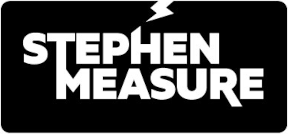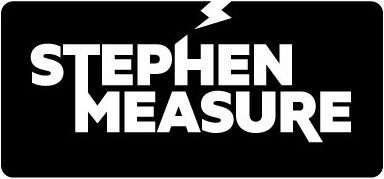Review: "What is a Woman?"
When future generations read the history of this bizarre phase our society is going through, they will chuckle with incredulity to learn that, after centuries of conflict between religion and secularism, when secularism was threatened in the first decades of the 21st century by a faith-based movement, it was religious conservatives who rose to defend it.
Because, make no mistake, Matt Walsh’s argument in “What is a Woman?” is a secular one. He is not talking about God, or angels, or visions, or prophets, or anything religious. He is not talking about faith. What he’s talking about is proof. He’s talking about empirical evidence. He’s talking about science. Matt Walsh, a religious man, is defending secular reality.
Let me start by highly recommending this documentary. It is creative, well put together, entertaining, and most importantly it effectively demonstrates how ridiculous gender identity sounds when discussed in a secular (i.e. proof-based) context.
I will warn you that I found it uncomfortable at times, sometimes very much so. Part of this is just my own squeamishness at watching awkward situations, like seeing Walsh sitting in front of believers in gender identity, each of whom have no idea what they got themselves into but are about to find out.
But what I found most uncomfortable was the latter portion where the documentary covered the brutal reality of “gender transitioning”. The discussion with the woman who deeply regrets modifying her body to appear male was hard to watch, and the videos shown of youth advocating “transitioning” were horrifying.
Yet it is happening, and it is spreading, and it will not stop unless more and more people are willing to stand up and say, “No. This is ridiculous. No.”
How Do We Define Our Shared Reality?
A common thread throughout the documentary is truth and reality, with the concept of truth itself making at least one of the interviewees very uncomfortable. But there was one exchange that really stood out to me. This was a “man on the street” segment where Walsh is speaking with a woman on the sidewalk in Hollywood, California:
Woman: What’s true to you can be false to me—
Walsh: What if I said that my truth is that you don’t exist? Does that mean you no longer exist?
Woman: I mean, if that’s your truth, sure, I don’t.
Walsh: But you do.
Woman: Oh, I mean if you’re saying that I do, then I do.
Walsh: Well, but even if I said that you don’t, you still do because we’re having this conversation.
Woman: I mean, are we?
The words by themselves are ludicrous, but you have to actually watch the scene to fully understand the incongruity of the situation. Here is a woman, sunglasses on her head, hands in her shorts pockets, wearing a face mask because of COVID, standing on a concrete sidewalk next to an asphalt street with cars streaming past, each car a precision-crafted machine made of steel, plastic, and glass. And behind the cars, buildings on the other side of the street, windows situated symmetrically on the wall, the neon sign of a tattoo parlor—all in all, a scene filled with unappreciated complexity and countless interdependencies.
My point is that her words are just empty platitudes. That’s not how she, or anyone else, actually lives their life. Consider her face mask. Would she wear a mask that was created according to the principles of “your truth”, or would she want one designed according to reliable standards? What about her position there on the sidewalk? Would she really be comfortable standing just feet away from multiple tons of steel moving at a high rate of speed if she believed that any of those drivers might decide that “their truth” was that the sidewalk was just another lane? Of course not.
A human society will always have a shared reality. It has to. The only question is how that shared reality is defined. Or better said, who gets to dictate what that reality is? Because that’s how it’s been for most of human history. What is our shared reality? It’s whatever the king says it is, or the emperor, or the khan—the person who wields the power that is holding the society together, the person who uses that power to dictate what the shared reality is.
But it’s not supposed to be like that anymore. This is the 21st century. We’re supposed to know better. This is the United States of America. We’re supposed to be a secular nation. And what is secularism other than an agreement amongst society that no person has the power to dictate our shared reality to everyone else, an agreement that we will all take our hands off the scale, strong and weak, rich and poor, and for the first time in human history: We will let the scale speak for itself.
That is what secularism is: a society where the shared reality is a secular reality, where the scale weighs whatever the scale tells us it weighs, not what we wish the scale weighed, or what the privileged and powerful tell us the scale weighs. In other words, secular reality is a reality based on proof.
Walsh: “Nature seems to always tell the truth, even when we don’t want to hear it.”
And that is all that secularism is. That so many misunderstand this is part of why we are in the mess we are in today. Secularism helps us define a proof-based reality, and then it is silent. Morality is outside the realm of proof. The meaning of life is outside the realm of proof. The existence of God—completely outside of proof. Secularism can tell us nothing about such things because those things can only be believed through faith, and the moment secularism comes into contact with faith, it becomes just another religion.
But the documentary “What is a Woman?” isn’t about morality, or the meaning of life, or God. It’s about reality, about secular reality. So why is it that it falls on the shoulders of a religious conservative like Matt Walsh to make a documentary about this? Where are our secular elites? Why are they not fighting on behalf of secularism?
Because gender identity is absolutely not based on proof. According to gender identity, you are whatever gender you say you are. It is based entirely on self-identity, which means it is based entirely on faith. And because it is based on faith, it has no place in secular reality. So where are our secular elites? Why are they not protecting secular reality from this faith-based incursion?
The Failure of our Secular Elites
We are witnessing the utter failure of our secular elites. Consider the individuals who defended gender identity in “What is a Woman?”: people from the fields of medicine and academia. These are supposed to be secular fields, yet here they are in this documentary championing a faith-based belief in a secular setting and making fools of themselves as a result.
Because that’s really why their opinions come across as so ridiculous. They are trying to fit a square peg into a round hole and it just doesn’t work. You see the same thing when an atheist interviews a sincere yet naive religious person, someone who believes deeply in their faith-based beliefs, but someone who doesn’t realize how misplaced a faith-based belief appears in the midst of a proof-based discussion, and so the atheist skewers them, and the audience laughs and laughs.
And it is the same in “What is a Woman?”, except instead of an atheist we have Matt Walsh, a religious conservative; and instead of a naive religious person, we have a failed secular elite; but the one commonality between the two: the faith-based belief that cannot be proven to be true.
So What Actually Is a Woman?
In the end, after dozens of attempts to get an answer to his question, Matt Walsh finally turns to his wife, who gives him the accurate secular definition: A woman is an adult human female.
“Nature seems to always tell the truth, even when we don’t want to hear it.”
Do you want to live in a secular society? Then keep your hands off that scale. Let it speak for itself.
Watch “What is a Woman?” at The Daily Wire.


